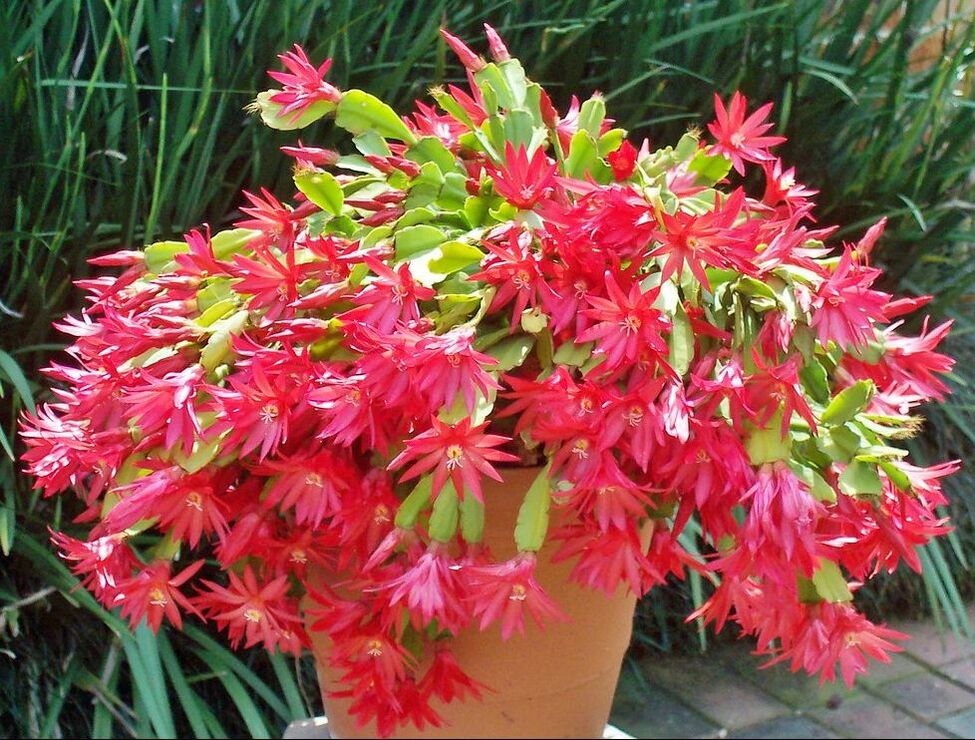How to grow Zygocactus

lZygocactus, with their pretty, flattened-bell flowers are the delights of the winter garden. They’re often called ‘crab cactus’ because of their crab-like segmented stems, or ‘Christmas cactus’, which seems odd in the Southern Hemisphere where they bloom in the middle of the year. Zygocactus bloom in winter because their flowering is initiated by winter’s longer nights and shorter days. Their flowering can be severely reduced by exposing the plant to additional light during the night (even household lighting).
Zygocactus (more correctly the genus Schlumbergera, but familiarly known as ‘zygos’) are hybrids of succulent plants that grow naturally on trees in their Brazilian homeland. Due to these tree-dwelling origins, they do very well in hanging baskets.
Zygocactus flower in shades of pink, red, purple and orange, with some flowers taking on yellow tones in warm, high light situations.
How to grow zygocactus in your garden
How to grow zygocactus in a pot
Growing tips
Zygocactus (more correctly the genus Schlumbergera, but familiarly known as ‘zygos’) are hybrids of succulent plants that grow naturally on trees in their Brazilian homeland. Due to these tree-dwelling origins, they do very well in hanging baskets.
Zygocactus flower in shades of pink, red, purple and orange, with some flowers taking on yellow tones in warm, high light situations.
How to grow zygocactus in your garden
- Choose a spot in the garden with dappled sunlight & well drained soil. Enrich the soil with a good organic fertiliser. In areas with heavy or clay soil, to help improve soil structure and drainage, add gypsum and mix in well.
- Dig the planting hole twice as wide and to the same depth as the root-ball. Remove the plant from the container, gently tease the roots and cut away any circled or tangled roots.
- Position in hole and backfill with soil, gently firming down. Form a raised or doughnut shaped ring of soil around the outer edge of the plant's root zone. This helps keep water where it's needed. Always water in well after planting to settle the soil around the roots and keep the soil moist for several weeks while the new plant establishes.
- Mulch around the base with organic mulch like bark chips, sugarcane or pea straw, keeping it away from the trunk.
- Water deeply, once or twice a week, depending on weather conditions.
- Feed during the growing season to promote strong root development, healthy colourful foliage and flowers.
How to grow zygocactus in a pot
- Choose a pot or hanging basket at least twice the width and depth of the rootball. Position in full sun to part shade.
- Fill chosen pot with quality potting mix. Remove the Zygocactus from the container, gently tease the roots and cut away any circled or tangled roots.
- Position in hole in centre of pot and backfill with potting mix, gently firming down. Water in well.
- Water deeply, once or twice a week, depending on weather conditions.
- Feed during the growing season to promote strong root development, healthy colourful foliage and flowers. A hanging basket allows the arching stems to hang down from the crown of the plant, just as they do from tree trunks in their natural habitat.
Growing tips
- Pieces of the flattened stems can be separated where the segments join and used for propagation. Simply allow the pieces to dry and push vertically into pots filled with a seed raising mix. Leave undisturbed in a well-lit, warm spot for a few months.
- It’s often recommended that allowing the plants to dry out in autumn will encourage flowering but scientific trials have shown the reverse to be true: water-stressed plants flower less. Light, though, is definitely a factor. Long, dark nights promote blooming. If you can’t keep your zygo in a dark place (at least 15 hours each night) experiment by covering it at night with an upturned cardboard box or another more glamorous substitute.
- Don’t overwater. Too much water can cause stems to rot and cause lesions to develop on the stems and leaves.
- Don’t move the plant once buds have formed. At this stage they hate changes.
